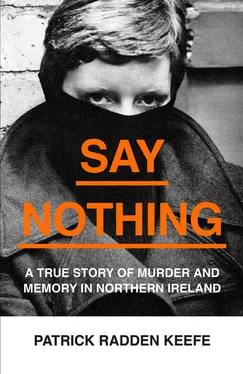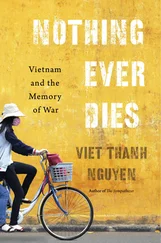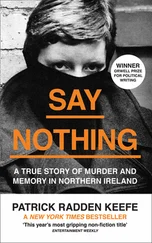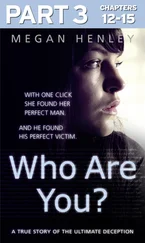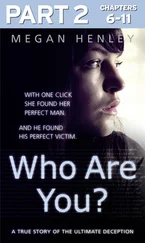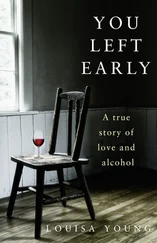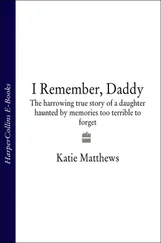The spectacle of women as avatars of radical violence may have felt bracingly novel, but in other parts of the world, such figures were finding a place in the iconography of revolution. While Belfast was burning in the summer of 1969, a twenty-five-year-old Palestinian terrorist named Leila Khaled hijacked a TWA flight from Rome to Tel Aviv and, with it, the attention of the world. Khaled diverted the flight to Damascus, becoming the first woman to hijack a plane. She emerged as a kind of pin-up for the new militancy. Her photo was splashed across glossy magazines, her dark eyes and cut-glass cheekbones framed by a keffiyeh, an assault rifle clutched in her hands. A few years later, a famous photo captured the American heiress Patty Hearst brandishing a sawn-off carbine and wearing a beret. One close friend of Dolours Price’s suggested that at least part of the allure for her, in those years, was ‘rebel chic’.
Stories about the Price sisters began to circulate among British troops stationed in Belfast and to find their way into the accounts of visiting war correspondents. They developed an outsize reputation as deadly femmes fatales who would venture into the mean streets of Belfast with an assault rifle hidden ‘down a bell-bottomed trouser leg’. Marian was said to be an expert sniper and was referred to, among British squaddies, as ‘the Widowmaker’. Dolours would become known in the press as ‘one of the most dangerous young women in Ulster’.
It is hard to judge how seriously to take such folklore. Some of it was the kind of frisky sexualised rumour that occasionally circulates in times of violent upheaval. A society that had always been a bit fusty and repressed was suddenly splitting apart in the most cataclysmic fashion. The perceived threats of sexual liberation and paramilitary chaos converged in the mythical spectre of a pair of leggy, rifle-toting libertines.
But if this image was to some degree a battlefield fantasy, one of the key people projecting it was Dolours Price herself. ‘Would you like to be shown round our bomb factory?’ she asked a visiting reporter in 1972, adding, ‘We had Paris Match magazine taking pictures of the place last week.’ Eamonn McCann, the activist from Derry who befriended Price on the Burntollet march, would still see her from time to time. She never told him explicitly that she had joined the Provos, but McCann knew. He was dismayed. He desperately wanted revolutionary change in Ireland, but he was certain that violence was not the way to achieve it. He told his friends who joined the armed struggle, ‘Nothing is going to come out of this that is commensurate with the pain that you will put into it.’
When he saw Price, McCann was always struck by her sheer glamour. Most of the republican women he had known growing up were stern and pious – if not the Virgin Mary, exactly, then the Virgin Mary with a gun. The Price sisters were something else altogether. Dolours always dressed elegantly, her hair and makeup impeccable. ‘They were sassy girls,’ McCann recalled. ‘They weren’t cold-eyed dialecticians or fanatics on the surface. There was a smile about them.’ In those days there was a discount shop in Belfast called Crazy Prices, and, inevitably, Dolours and Marian became known among their friends as the Crazy Prices.
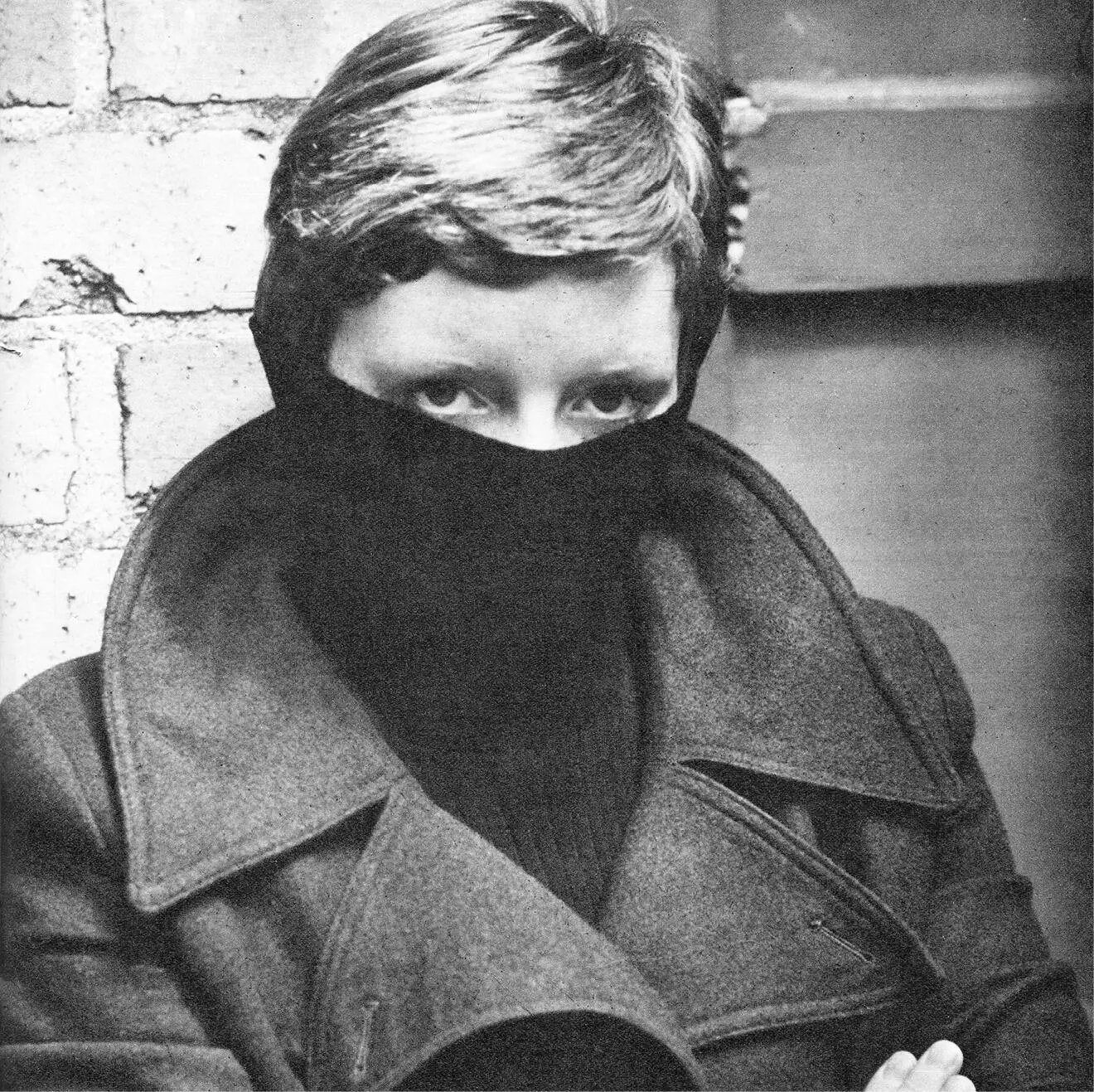
Dolours Price, photographed for the Italian magazine L’Europeo (© L›Europeo RCS/ph.Stefano Archetti)
Once, officers from the Royal Ulster Constabulary barged into the house on Slievegallion Drive at six in the morning and announced that they were arresting Dolours as a suspected member of an illegal organisation. ‘She’s not going out of here until she’s had her breakfast,’ Chrissie said. The police, cowed by this small but formidable woman, agreed to wait, and Chrissie instructed her daughter to go and put on makeup. She was buying time so that Dolours could collect her wits. When Dolours was ready to go, Chrissie put on a fur coat, which she normally reserved for special occasions. ‘I’m going with her,’ she announced.
For a moment, Dolours was embarrassed, thinking, I’m in the IRA and my mother is coming with me to get arrested. But off they went. At Castlereagh police station, she was interrogated. She knew the rules, however, and she gave the police no information, repeating only ‘I have nothing to say.’ Eventually, she was released without charges. It would be difficult to make a case against Dolours: after all, she was still a student, with good marks and an attendance record to show for it. Before they left the station, Chrissie paused to admire the mug shot that the police had taken of her daughter.
‘Can I keep that?’ she deadpanned. ‘That’s a nice one.’
As a fund-raising initiative, the Provos took to robbing banks. Lots of banks. One day in the summer of 1972, three fresh-faced nuns walked into a branch of the Allied Irish Bank in Belfast just as it was about to close. The nuns reached under their habits and came out with guns – then proceeded to hold up the place. It was the Price sisters, along with another female volunteer. A month after the original robbery, three women walked into the very same bank and robbed it again. (The identity of the thieves was never ascertained, but it was tempting to wonder whether the sisters had not returned for seconds.) On another occasion, Dolours hijacked a post office lorry, because the IRA had received intelligence that it was transporting sacks of money.
For all the horror unfolding around them, there was a sense of adventure for Dolours and her comrades, a fantasy that they were dashing outlaws in a society in which all order had broken down. When one of Dolours’s close colleagues in the IRA, a man named James Brown, was taken from prison to a hospital in Antrim with a burst appendix, the Price sisters carried out an audacious rescue mission, raiding the hospital, disarming the policemen there, and springing Brown free. It was a small miracle that the sisters managed to evade apprehension by the army or the police. Perhaps their ability to play the part of demure Catholic schoolgirls whenever they were confronted was enough to divert suspicion. But the authorities were also simply overwhelmed by the level of violence during this period.
The ranks of the Provos were filled with interesting characters. Dolours became friendly with an older man named Joe Lynskey, who had grown up on Cavendish Street, off the Falls Road, and still lived with his parents and his sister as he neared his fortieth birthday. Lynskey had trained as a monk during the 1950s, at an abbey in Portglenone, taking a vow of silence and rising before dawn each morning to pray. But he ended up leaving the order and joining the IRA. Lynskey was a bit of an overgrown child, having sat out his adolescence at the monastery. He was regarded as something of an oddball by the younger volunteers. They called him the ‘Mad Monk’. But he had kind eyes and a gentle manner, and Dolours grew very fond of him.
Another person Price became associated with was a tall, angular young man named Gerry Adams. He was an ex-bartender from Ballymurphy who had worked at the Duke of York, a low-ceilinged pub in the city centre that was popular with labour leaders and journalists. Like Price, Adams came from a distinguished republican family: one of his uncles had broken out of Derry jail with her father. Adams had got his start as an activist with a local committee that protested against the construction of Divis Flats. He never attended college, but he was a fearsome debater, smart and analytical, like Dolours. He had joined the IRA a few years before she did, and he was already rising quickly through the Belfast leadership.
Читать дальше
